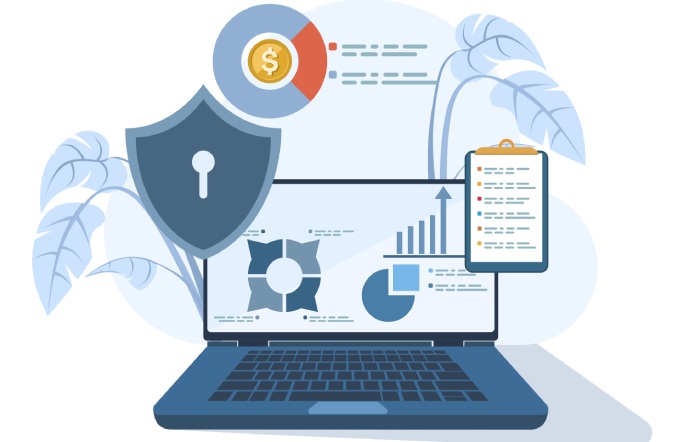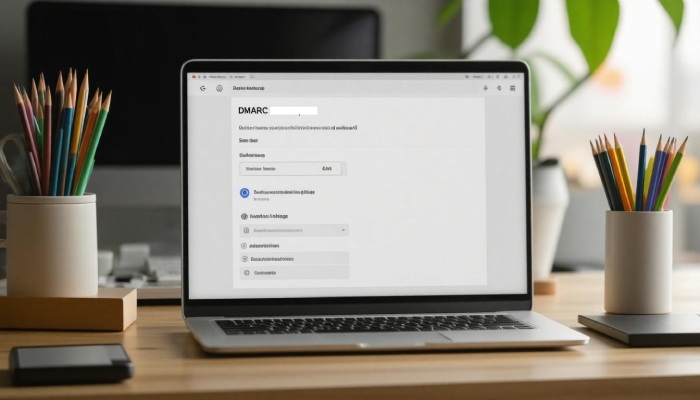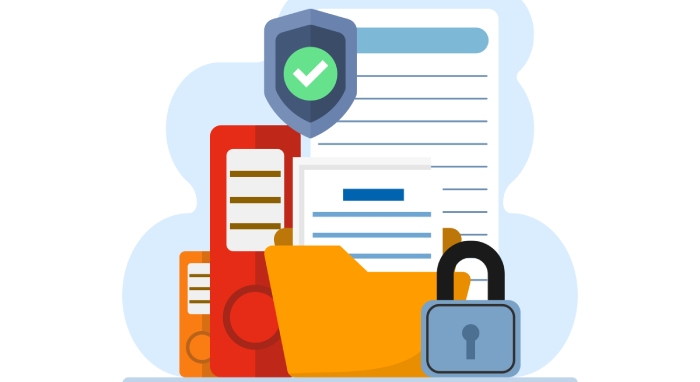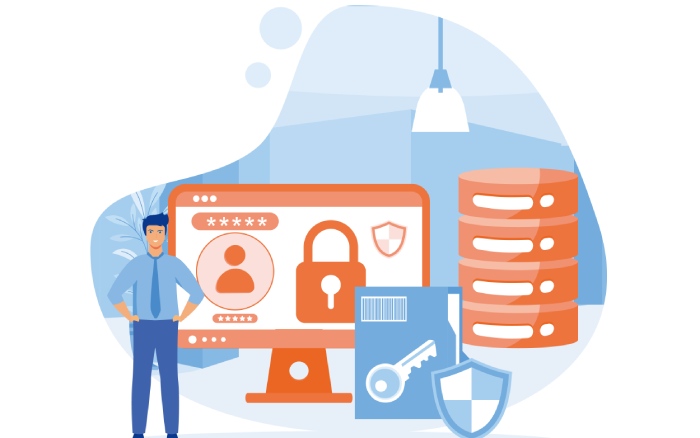In today’s digital age, where email is a primary mode of communication for businesses, ensuring your email security is crucial. Have you ever wondered how many fraudulent emails flow through the internet, potentially tarnishing your reputation? A robust solution to these issues is DMARC—Domain-based Message Authentication, Reporting & Conformance. By implementing a DMARC policy, you can significantly reduce the risks of email spoofing and improve deliverability rates.
In this article, we’ll explore various free DMARC checker tools that help you validate your email security with ease. It’s time to take control of your domain’s safety and ensure that your emails are reaching the right inboxes!
A reliable free DMARC checker you can use is MXToolbox, which provides diagnostic tests and parses your DMARC record to ensure its correctness. This tool is essential for verifying your email authentication policies and enhancing your organization’s email security.
Top Free DMARC Checker Tools
One of the standout options in the realm of DMARC checking is MXToolbox. This user-friendly tool simplifies the analysis of DMARC records, running diagnostic tests to ensure that everything functions as it should. Imagine you’re a brand new email administrator; using MXToolbox allows you to easily understand any potential issues with your domain’s email authentication. It not only lists the settings but also breaks down what they mean, providing clear insight into your email security status.
Similarly, if you’re looking for something that presents information in a more visually engaging format, Postmark DMARC is worth exploring.
With its aesthetically pleasing dashboard, Postmark checks DMARC records and translates complex data into simple visual displays. This feature is particularly handy when reporting to stakeholders who may not be familiar with technical jargon. By transforming raw data into digestible charts and graphs, Postmark DMARC ensures everyone on your team understands the importance of maintaining secure email communications. Such clarity can foster collaboration and support informed decision-making within your organization.
For those who seek a deeper analysis, dmarcian offers tools designed for professionals requiring comprehensive monitoring of their email domains.
This platform allows users to explore the intricacies of their DMARC implementations and monitor trends over time. However, dmarcian’s interface may appear overwhelming for beginners due to the wealth of information provided. Still, for those well-versed in email security protocols, dmarcian proves invaluable, helping you pinpoint specific areas needing improvement and suggesting actionable steps to bolster security frameworks. It’s an excellent tool if you want to go beyond surface-level checking and truly understand how your email practices stack up against best practices.
Here are some key features of these top free DMARC checker tools:
| Tool | Key Features |
| MXToolbox | Ideal for quick checks and diagnostics with straightforward feedback. |
| Postmark DMARC | Visually represents complex data, making it easier for all team members to comprehend. |
| dmarcian | Provides in-depth analysis suited for professional environments demanding thorough oversight. |
Utilizing these resources empowers businesses to protect their domains from phishing attacks and spam while maintaining a strong sender reputation. Regularly using reliable free DMARC checker tools allows you to stay ahead of potential threats and ensures a secure communication channel with your audience.
As we explore these tools, understanding their operational intricacies will enhance your ability to safeguard your email systems effectively.
How to Use DMARC Checker Tools
The first step in utilizing a DMARC checker is inputting your domain name. This process is not complicated; simply navigate to your chosen tool—such as MXToolbox or dmarcian—and look for an input field that requests your domain name. Enter it carefully, ensuring no typos slip through. Your domain acts as the cornerstone of verification, so accuracy here is paramount.
Once you’ve entered your domain, it’s time to see what the tool has to say about your current configuration.
Review Parsed Records
After initiating the check, the tool will parse your DMARC records and compile a report that details its findings. This report typically covers important aspects such as the status of your DMARC record, alignment with SPF (Sender Policy Framework) and DKIM (DomainKeys Identified Mail), and reveals whether your established policies are functioning correctly.
Take a moment to carefully review this information; it’s crucial that you understand what the results indicate about your email security posture. Like a map for a journey, this report points out both safe paths and hazards along the way.
Now that you’ve got a clearer picture of how your settings stack up, you may find some issues lurking in the shadows.
Address Issues
Often, these reports illuminate problems that require immediate attention. Should there be errors or warnings highlighted within the report, don’t panic. It’s all part of the journey toward secure email practices. Most good DMARC checker tools will provide suggestions for correcting any identified discrepancies which help ensure your domain aligns with DMARC standards.
It’s like having a coach who guides you through the necessary adjustments. Implement these recommendations carefully, giving special consideration to each action as it can significantly impact how your emails are authenticated down the line.
With issues addressed, you’re almost at the finish line of this process.
Save Reports
Once you have made the necessary corrections to improve your DMARC settings, it’s beneficial to save or export your reports. Keeping documented evidence of your findings means you can track changes over time and share them easily with your IT team or other stakeholders involved in maintaining email security. These records act as benchmarks against which future checks can be compared and are invaluable for ongoing monitoring efforts.
While digital convenience helps us stay organized, having a tangible record reinforces accountability in maintaining best practices.
Armed with these insights on how to use DMARC checker tools effectively, you’re now equipped with the knowledge needed for maintaining a vigilant approach to email security management. The beauty of these tools lies in their ability not only to diagnose but also to educate—allowing you to grow alongside your understanding of cybersecurity principles.
As you prepare to safeguard your domain further, let’s shift our focus toward practical implementations that enhance your email protection strategy.
Setting Up DMARC for Domain Protection
Implementing a DMARC (Domain-based Message Authentication, Reporting, and Conformance) policy is crucial to keeping your email communications secure. This means that, with DMARC, you’re preventing malicious actors from using your domain to send deceptive emails, which can harm your reputation and put your contacts at risk. The first step in this process is creating a DMARC record that suits your needs.
Creating a DMARC Record
To start, you’ll want to generate a DMARC record using a handy DMARC record generator tool available online. This tool simplifies the creation process by asking for specific information about your domain. You will need to define your chosen policy—options include none (monitor only), quarantine (mark suspicious emails as spam), or reject (block emails that fail authentication). Additionally, you’ll need to specify reporting email addresses where you wish to receive feedback about any authentication failures.
As you fill out these fields, think of this record as a set of instructions for how other email servers should handle messages from your domain.
Adding the Record to DNS
Once you’ve created your individualized DMARC record, it’s time to put it into action by adding it to your DNS settings.
Log in to your DNS hosting provider’s dashboard. It’s often as simple as navigating to the DNS settings area. Look for an option to add a new TXT record—this is where you’ll paste the information from the DMARC record you’ve just generated.
When adding the TXT record, ensure it aligns perfectly with the format:
v=DMARC1; p=quarantine; rua=mailto:admin@example.com; ruf=mailto:admin@example.com; pct=100;
Here, each segment specifies different directives like reporting addresses and percentage of emails subjected to policy enforcement.
Many users have noted significant improvements once they implemented their DMARC policies. One user remarked, “Setting up DMARC improved our email deliverability rates almost instantly,” showcasing how effective this layer of security can be.
After successfully adding the record and enticing potential improvements in email health and security, consider the next critical steps required for ensuring comprehensive protection. These involve meticulously crafting DKIM and SPF records, which are essential components in fortifying your overall email security strategy.
Implementing DKIM and SPF Records
When we talk about securing your emails, implementing DKIM (DomainKeys Identified Mail) and SPF (Sender Policy Framework) goes hand in hand with setting up DMARC. Imagine your emails as valuable packages being shipped; if a package isn’t properly sealed or identified, it could be lost or compromised on its way to the recipient. Likewise, DKIM and SPF provide essential security layers that prevent messages from being tampered with or masqueraded as someone else’s.
Setting Up DKIM
The first step in this process is generating a DKIM key pair using your mail server. This entails creating both a public and private key. The public key is placed in your DNS settings while the private key is stored securely within your mail server’s configuration. This setup allows your server to sign outgoing emails with its private key, essentially adding a digital signature that recipients can verify against the published public key.
This authenticity check helps the recipient’s mail server confirm that the email genuinely came from you and hasn’t been altered in transit.
Once you’ve got your DKIM set up, it’s time to turn our focus to SPF records.
Configuring SPF
To configure SPF, you’ll need to create a specific record that outlines which servers are authorized to send emails on behalf of your domain. This record is added to your DNS settings as another TXT record, following a specific format. For example, an SPF record might look like v=spf1 include:_spf.google.com ~all, where you define trusted sending sources carefully.
Be aware: Keeping your SPF entry under 255 characters ensures compatibility with DNS standards.
It’s crucial to test the configuration using an SPF record checker tool after setup. This will help you confirm whether everything is functioning as expected and no unauthorized servers can send emails under your domain’s name.
Think of DKIM and SPF as locks on your email security doors, with DMARC acting as the key that verifies they are engaged. Together, they form a cohesive authentication system that protects against spoofing and enhances the overall deliverability of your emails.
As organizations increasingly adopt these protocols, their collective effort moves towards a more secure landscape for email communications—one where confidence in email exchanges can be restored. This focus on security paves the way for exploring the effective tools available for improving email safety and reliability.
Benefits of DMARC Checkers
Utilizing DMARC checkers has several substantial benefits for your organization. One standout advantage is improved email deliverability. When Internet Service Providers (ISPs) notice that your domain successfully passes DMARC checks, they are more inclined to deliver your emails directly to recipients’ inboxes instead of landing them in the dreaded spam folder. This can significantly affect businesses that rely on email for communication and marketing. By ensuring compliance with DMARC standards, you signal to ISPs that your emails are legitimate and trustworthy.
Improved Deliverability
Companies adopting DMARC can see an increase in their email deliverability rates by 10-20%. Imagine sending out a promotional campaign only to discover that half of your audience never saw it because it was incorrectly labeled as spam due to a lack of proper authentication. That lost opportunity can cost a business dearly, both in terms of revenue and reputation.
Furthermore, many organizations report that having DMARC in place enhances their email performance metrics over time. A systematic approach using DMARC checkers not only boosts deliverability rates but also helps identify potential issues quickly.
Enhanced Security
Beyond improving deliverability, DMARC significantly enhances security by minimizing phishing risks. It achieves this by preventing cybercriminals from spoofing your domain—a tactic often employed in phishing attacks to deceive recipients into trusting malicious emails that appear legitimate.
The Anti-Phishing Working Group has shown compelling evidence: domains implementing DMARC have seen a staggering 50% reduction in spoofing attempts. This means implementing a simple framework can lead to considerable safeguarding against one of today’s most persistent threats.
These advantages make adopting robust DMARC practices vital for any organization’s email strategy. As we navigate an increasingly dangerous digital landscape, the next logical step is understanding how to further mitigate risks associated with fraudulent communications.
Reducing Email Spoofing Risks
Email spoofing is a growing concern for businesses worldwide, with approximately 90% of all phishing attacks occurring through this method. This leads to not only a tarnished reputation but could also result in financial losses averaging $3.86 million per data breach due to such malicious tactics. Thankfully, adopting DMARC (Domain-based Message Authentication, Reporting, and Conformance) can serve as your frontline defense against these threats.
The essence of DMARC lies in its ability to authenticate the sending domain’s identity. When a recipient’s email server receives an email claiming to come from your domain, DMARC allows it to check whether the message aligns with your designated email policies. If discrepancies arise—such as when an imposter tries to use your domain for malicious purposes—the protocols you’ve set come into play:
- none simply accepts the email,
- quarantine suggests placing it into a spam folder,
- while reject actively blocks it from entering the inbox.
Thus, with each DMARC implementation, organizations witness significant decreases in risks associated with email spoofing.
Think of DMARC as an advanced security system installed in a high-profile building; it doesn’t just identify intruders but also immediately takes action based on preset conditions.
Imagine a sophisticated bouncer standing at the entrance of an exclusive club. This bouncer checks IDs meticulously before allowing anyone inside. If someone attempts to sneak in with fake identification—perhaps misrepresenting themselves as one of your guests—the bouncer denies entry based on the rules you’ve established for who’s welcome. In much the same way, DMARC ensures that only legitimate emails—those genuinely sent from your organization—make it past that digital door.
As more organizations begin utilizing DMARC as part of their security toolkit, trends indicate rising adoption rates which have surged from 10% in 2018 to 45% in 2023. This shift demonstrates a growing acknowledgment among companies about the need for robust email protection amidst rampant phishing attacks.
With proper implementation, businesses leveraging DMARC are not only safeguarding their reputations but also seeing substantial reductions—a staggering 75% decrease in successful phishing attacks, compared to those without DMARC records which report facing incidents of spoofing 60% of the time. By investing in DMARC now, organizations position themselves strongly against the evolving landscape of cyber threats.
Adopting DMARC represents more than just a precaution; it’s an essential commitment to securing not only your business interests but also maintaining trust with customers and stakeholders alike.
This critical security measure opens up a pathway to explore various other tools and services designed to enhance your organization’s email safety further.
Alternative DMARC Services
The landscape of DMARC services includes premium options that cater to large organizations, as well as community-driven tools designed for hands-on users. Many companies opt for premium services like PowerDMARC, Valimail, Agari, and Proofpoint because they offer advanced features that can transform how businesses protect their email domains.
Premium Options
These services stand out in a saturated market. For instance, Valimail offers an impressive suite of capabilities such as automated policy enforcement, which ensures your email settings remain consistent across various platforms. With intricate reporting capabilities, Valimail helps organizations understand how their emails are being authenticated, allowing them to take proactive measures against phishing attacks.
Startups or mid-market organizations looking for robust solutions often find Valimail ideal, making it a smart investment even if pricing is undisclosed.
Meanwhile, PowerDMARC is another strong contender; it starts at $8 a month and appeals to businesses of all sizes with its comprehensive email security approach and high platform uptime. It also includes important features like MTA-STS and TLS-RPT, which enhance the protection your email server needs.
As you’ve seen, the right provider plays a crucial role in achieving better email integrity; this should never be neglected when choosing a DMARC solution.
It’s essential for enterprises to assess their specific requirements before deciding on a provider. Larger organizations may favor services like Proofpoint or Agari, which provide enhanced threat detection systems that are indispensable in today’s cybersecurity climate. These providers focus on complex analytics that translate raw data into actionable insights, bridging the gap between understanding risks and mitigating them efficiently.
Community Tools
On the other hand, several community-driven tools present an alternative for those who desire flexibility or prefer customizable solutions; ParseDMARC is one such tool that integrates beautifully with platforms like Kibana for comprehensive DMARC data visualization. Users must note, however, that while these tools are generally free or low-cost, they come with an expectation of technical expertise to configure effectively. If you’re comfortable navigating the back-end workings of your domain and need a tailored experience, open-source solutions can offer powerful results without requiring ongoing fees.
Ultimately, whether you choose premium services or community tools will depend on your organization’s size, budget, and technical capabilities. Each option has its strengths and weaknesses; understanding these will help you navigate the complexities of email authentication more effectively.
By equipping yourself with the right DMARC service tailored to your needs, you’re taking proactive steps toward safeguarding your email communication against potential threats.
How often should I run a DMARC check on my email domains?
You should run a DMARC check on your email domains at least once a month to ensure that your email security protocols are functioning correctly and to quickly identify any unauthorized use of your domain. Regular checks can help prevent phishing attacks, which accounted for 75% of all cyber threats in recent years. By monitoring your DMARC reports, you can adapt to changes in email usage and maintain control over your brand’s reputation in the digital space.
What specific metrics or reports can I expect from using a free DMARC checker?
Using a free DMARC checker, you can expect to receive metrics such as the percentage of emails that passed or failed DMARC validation, reports on the sources sending emails on behalf of your domain, and feedback on SPF and DKIM alignment. These insights help identify unauthorized senders and enhance your email security posture. According to studies, domains implementing DMARC reduce phishing attacks by up to 80%, underscoring the importance of leveraging these metrics for safeguarding your email communications.
What steps should I follow after obtaining results from a DMARC check?
After obtaining results from a DMARC check, you should first analyze the reported data to identify any misconfigurations in your DNS records. Correct these issues by updating your SPF and DKIM settings to ensure proper authentication. Next, review the reports to understand how your email domain is being used and whether there are unauthorized senders. Finally, consider gradually increasing your DMARC policy level to “quarantine” or “reject” based on the results of your monitoring; studies show that domains with these stricter policies can reduce phishing attacks by up to 90%. Regularly reassess your settings and stay updated on best practices for ongoing email security maintenance.
How does a DMARC checker work to verify the configuration of my domain?
A DMARC checker works by querying DNS records to verify the configuration of your domain’s DMARC policy, which specifies how email receivers should handle messages that fail SPF (Sender Policy Framework) and DKIM (DomainKeys Identified Mail) checks. It analyzes these records to ensure they are correctly set up for email authentication, providing insights into potential misconfigurations and overall domain security. According to a study, implementing DMARC can reduce phishing attempts by up to 78%, making it crucial for safeguarding your brand’s email reputation.
Are there limitations to using a free DMARC checker compared to paid versions?
Yes, there are limitations to using a free DMARC checker compared to paid versions. Free tools often have restrictions in terms of the number of domains you can check, the frequency of checks, and the depth of analysis provided. For instance, many free services may not offer detailed reporting or additional features like monitoring for phishing attacks, which is crucial for comprehensive email security. According to industry surveys, organizations that utilize paid DMARC solutions report a 30% increase in overall email deliverability and a significant reduction in spoofing incidents compared to those relying solely on free checkers.






